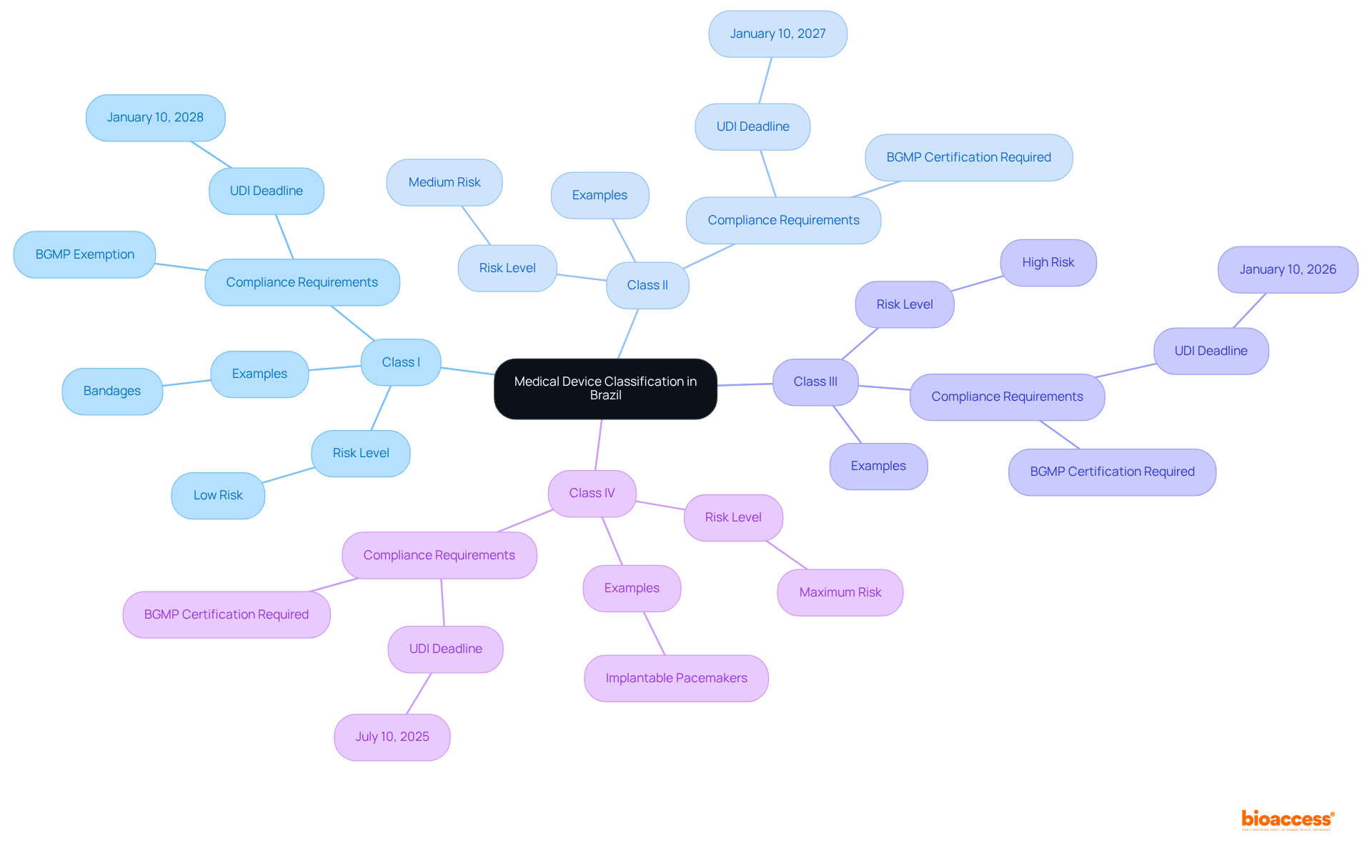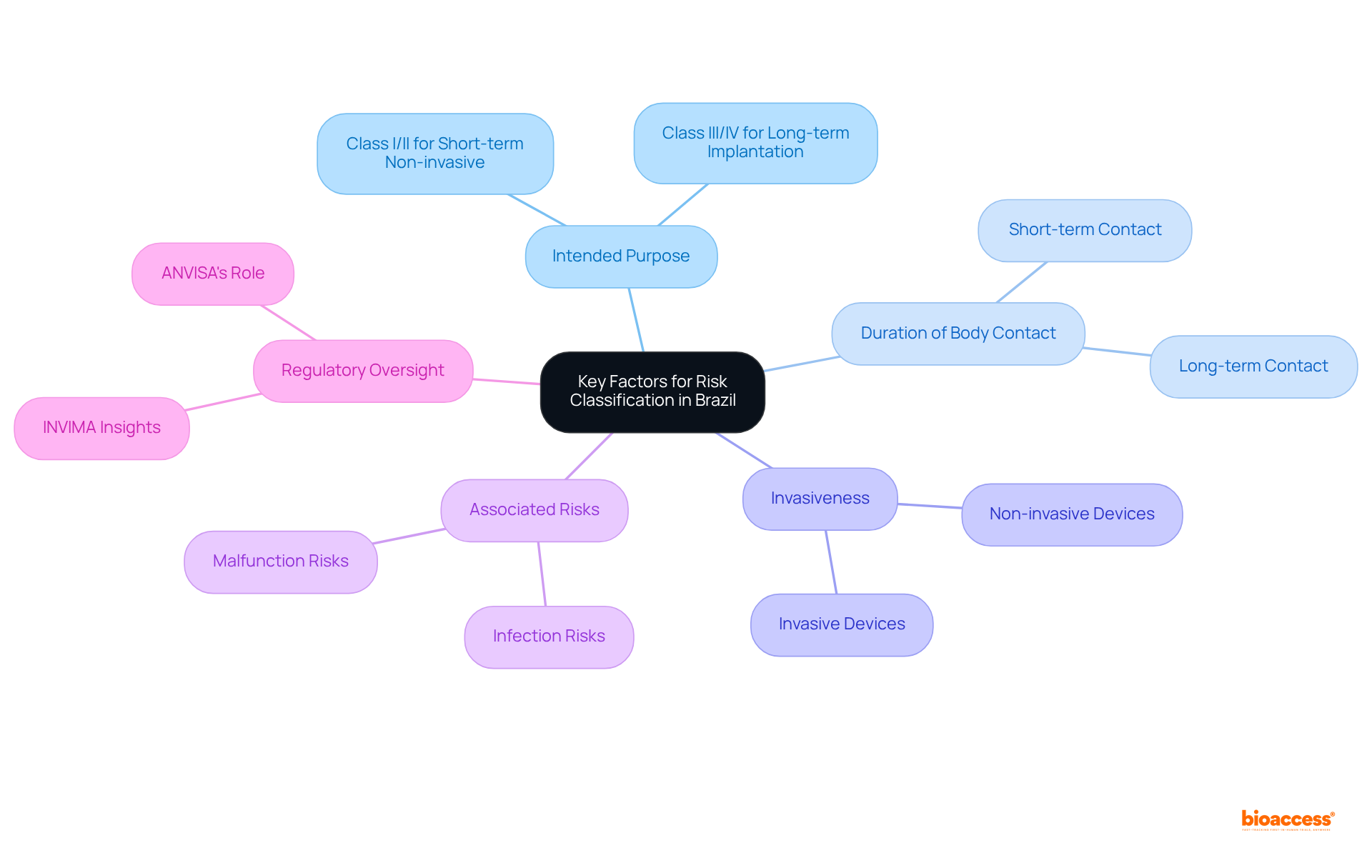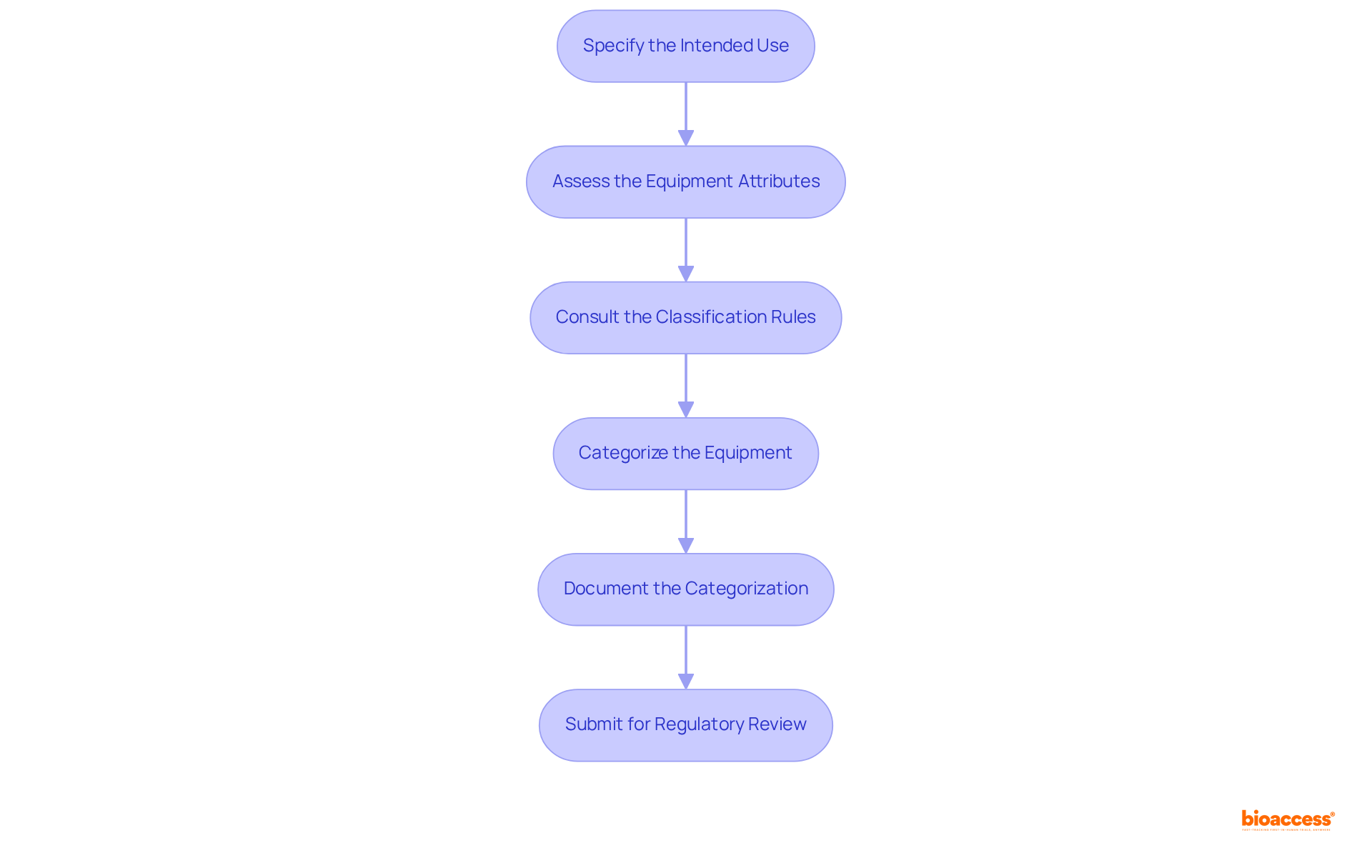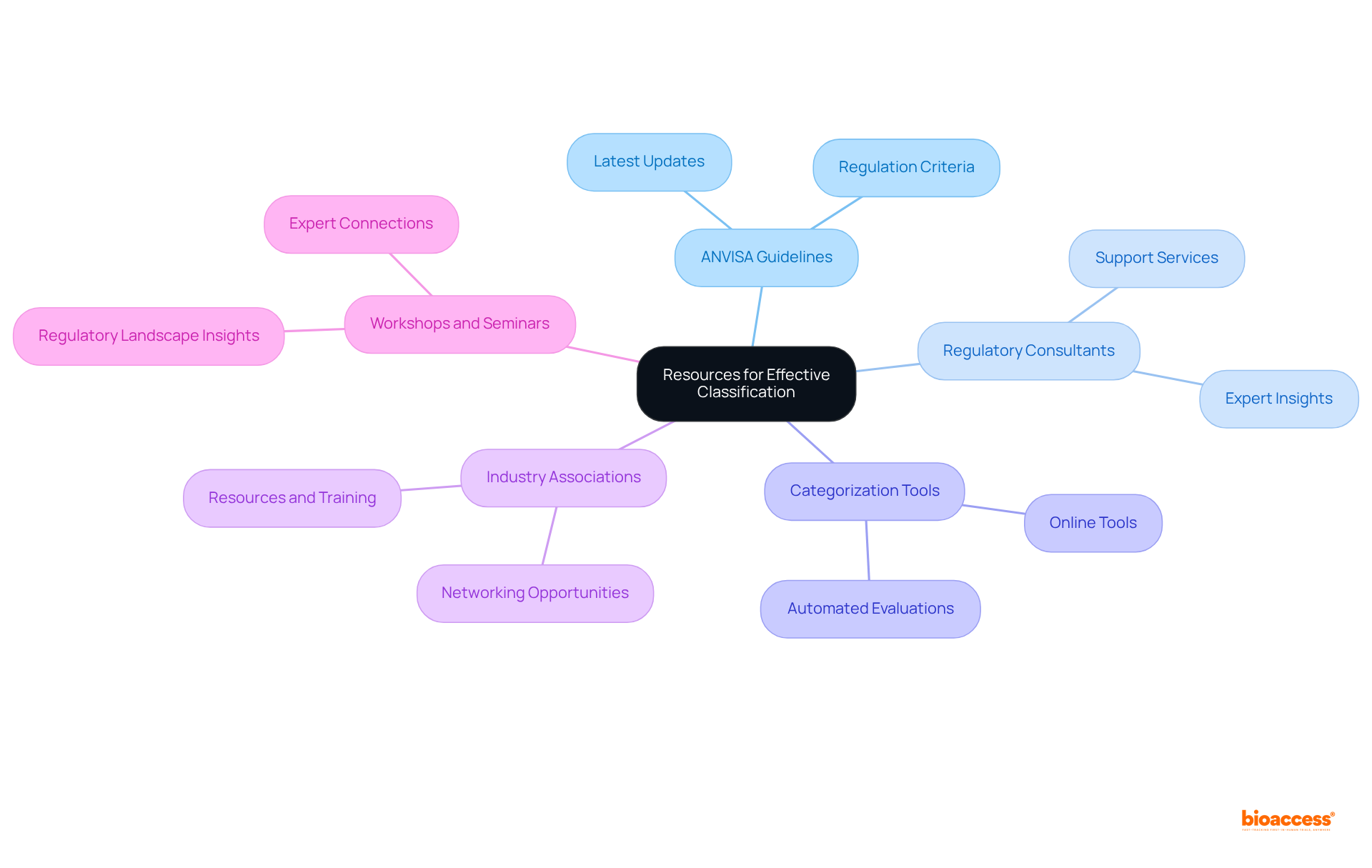


Choosing the device risk class in Brazil necessitates a systematic approach that meticulously considers the intended use, equipment attributes, and applicable regulatory guidelines. This categorization of medical devices into four distinct classes based on their risk levels is critical for ensuring safety and compliance. The article delineates a step-by-step classification process, underscoring the paramount importance of adhering to ANVISA regulations. These regulations dictate the necessary documentation and oversight required for each class, thereby ensuring compliance and facilitating market access for medical products.
Navigating the complexities of medical device classification in Brazil is a formidable challenge, particularly given the regulatory landscape shaped by the stringent guidelines of ANVISA. Understanding how to select the appropriate device risk class is not merely a compliance issue; it is essential for ensuring that medical products adhere to safety standards and secure market access.
With the Brazilian medical equipment market projected to surpass $10 billion by 2025, the stakes are significant for manufacturers seeking to introduce innovative solutions.
How can stakeholders effectively navigate this intricate classification system to ensure their devices are classified correctly and efficiently?
In Brazil, knowing how to choose device risk class Brazil is essential as medical instruments are classified into four categories based on their associated risk levels:
This classification system is regulated by ANVISA (Agência Nacional de Vigilância Sanitária) and adheres to the guidelines set forth in RDC 751/2022. Understanding how to choose device risk class Brazil is crucial, as it dictates the level of oversight and documentation required for each item. For example, Class I products, such as bandages, are subject to minimal oversight, while Class IV items, including implantable pacemakers, must undergo an extensive evaluation and approval process.
By 2025, the medical equipment market in Brazil is projected to reach US$10.15 billion, reflecting a growing demand for innovative technologies. Familiarizing yourself with how to choose device risk class Brazil will empower you to navigate the compliance landscape effectively, ensuring adherence and facilitating market access for your medical products.
It is also important to note that Category II medical instruments have a Unique Device Identification (UDI) deadline extended to January 10, 2027, while Category IV instruments must comply by July 10, 2025. Furthermore, manufacturers of Class III and IV devices are required to obtain BGMP certification, a critical aspect of the compliance process.
Recent developments include the public consultation (Public Consult 13/2025) published by ANVISA on March 20, 2025, which is relevant to ongoing policy changes. With insights from experts like Ana Criado, Director of Compliance Affairs at bioaccess, who possesses extensive experience in oversight and clinical trials across Latin America, managing these categories becomes more manageable.
Bioaccess offers comprehensive clinical trial management services, including feasibility studies, site selection, compliance reviews, and project management, ensuring that your medical products meet all regulatory requirements efficiently.

In Brazil, understanding how to choose device risk class Brazil involves considering several critical factors, such as the intended purpose of the medical instrument, duration of body contact, invasiveness, and associated risks. For example, instruments designed for short-term, non-invasive applications generally fall into Class I or II, whereas those meant for long-term implantation are classified as Class III or IV.
The categorization process also considers the materials used in the devices and potential hazards, such as infection or malfunction. Furthermore, it is essential to recognize that INVIMA, the Colombian regulatory authority, significantly oversees medical devices in Colombia, offering valuable insights into regional regulatory practices.
In 2024, ANVISA authorized 150 health-related products, underscoring the necessity of precise categorization to expedite market entry. By meticulously evaluating these factors, manufacturers can strategically navigate the process of how to choose device risk class Brazil, ensuring compliance and facilitating a smoother path to market.

To classify a medical device in Brazil, adhere to the following steps:

To understand how to choose device risk class in Brazil effectively, it is essential to leverage key resources and tools that ensure compliance and streamline the process.
ANVISA Guidelines: Regularly consult ANVISA's official website for the latest updates on regulations and classification criteria. Staying informed is crucial for understanding how to choose device risk class Brazil to ensure compliance with current standards.
Regulatory Consultants: Collaborate with regulatory consultants specializing in Brazilian medical device regulations. Their expertise offers valuable insights and support, helping you learn how to choose device risk class Brazil successfully.
Categorization Tools: Utilize online categorization tools and databases specifically designed to streamline the sorting process. These tools provide automated evaluations based on your input data, simplifying how to choose device risk class Brazil for your equipment.
Industry Associations: Join industry associations that offer resources, training, and networking opportunities. These organizations provide information on how to choose device risk class Brazil, keeping you updated on best practices and compliance changes affecting medical products.
Workshops and Seminars: Engage in workshops and seminars focused on medical device regulations in Brazil. These events enhance your understanding of the regulatory landscape and provide insights on how to choose device risk class Brazil while facilitating connections with experts in the field.

Understanding how to choose device risk class in Brazil is pivotal for navigating the complex landscape of medical device regulations. The classification system, overseen by ANVISA, segments medical devices into four distinct categories based on their risk levels, each requiring varying degrees of oversight and documentation. This knowledge not only aids compliance but also facilitates market access, which is increasingly crucial as Brazil's medical equipment market continues to expand.
Key factors in determining the appropriate risk classification include:
The step-by-step process outlined emphasizes the importance of thorough evaluation and adherence to regulatory guidelines, ensuring that manufacturers can effectively categorize their products. Additionally, leveraging resources such as ANVISA guidelines, regulatory consultants, and categorization tools can significantly enhance the classification process.
Ultimately, staying informed and prepared is essential for manufacturers aiming to succeed in Brazil's medical device market. Engaging with industry resources and experts not only streamlines compliance but also positions businesses to adapt to evolving regulations. By prioritizing a clear understanding of the classification system, stakeholders can ensure their products meet necessary standards, paving the way for innovation and improved healthcare outcomes in Brazil.
What are the risk classes for medical devices in Brazil?
Medical devices in Brazil are classified into four categories based on their risk levels: Class I (low risk), Class II (medium risk), Class III (high risk), and Class IV (maximum risk).
Who regulates the classification of medical devices in Brazil?
The classification system for medical devices in Brazil is regulated by ANVISA (Agência Nacional de Vigilância Sanitária) according to the guidelines set forth in RDC 751/2022.
Why is it important to understand medical device classification in Brazil?
Understanding medical device classification is crucial as it dictates the level of oversight and documentation required for each product, impacting compliance and market access for medical products.
What is the oversight level for Class I and Class IV medical devices?
Class I products, such as bandages, are subject to minimal oversight, while Class IV items, including implantable pacemakers, must undergo an extensive evaluation and approval process.
What is the projected value of the medical equipment market in Brazil by 2025?
The medical equipment market in Brazil is projected to reach US$10.15 billion by 2025, indicating a growing demand for innovative technologies.
What are the Unique Device Identification (UDI) deadlines for Category II and IV medical instruments?
The UDI deadline for Category II medical instruments has been extended to January 10, 2027, while Category IV instruments must comply by July 10, 2025.
What certification is required for manufacturers of Class III and IV devices?
Manufacturers of Class III and IV devices are required to obtain BGMP certification as part of the compliance process.
What recent developments have occurred regarding medical device regulation in Brazil?
A public consultation (Public Consult 13/2025) was published by ANVISA on March 20, 2025, which is relevant to ongoing policy changes in medical device regulation.
What services does Bioaccess provide for clinical trial management?
Bioaccess offers comprehensive clinical trial management services, including feasibility studies, site selection, compliance reviews, and project management, ensuring that medical products meet all regulatory requirements efficiently.